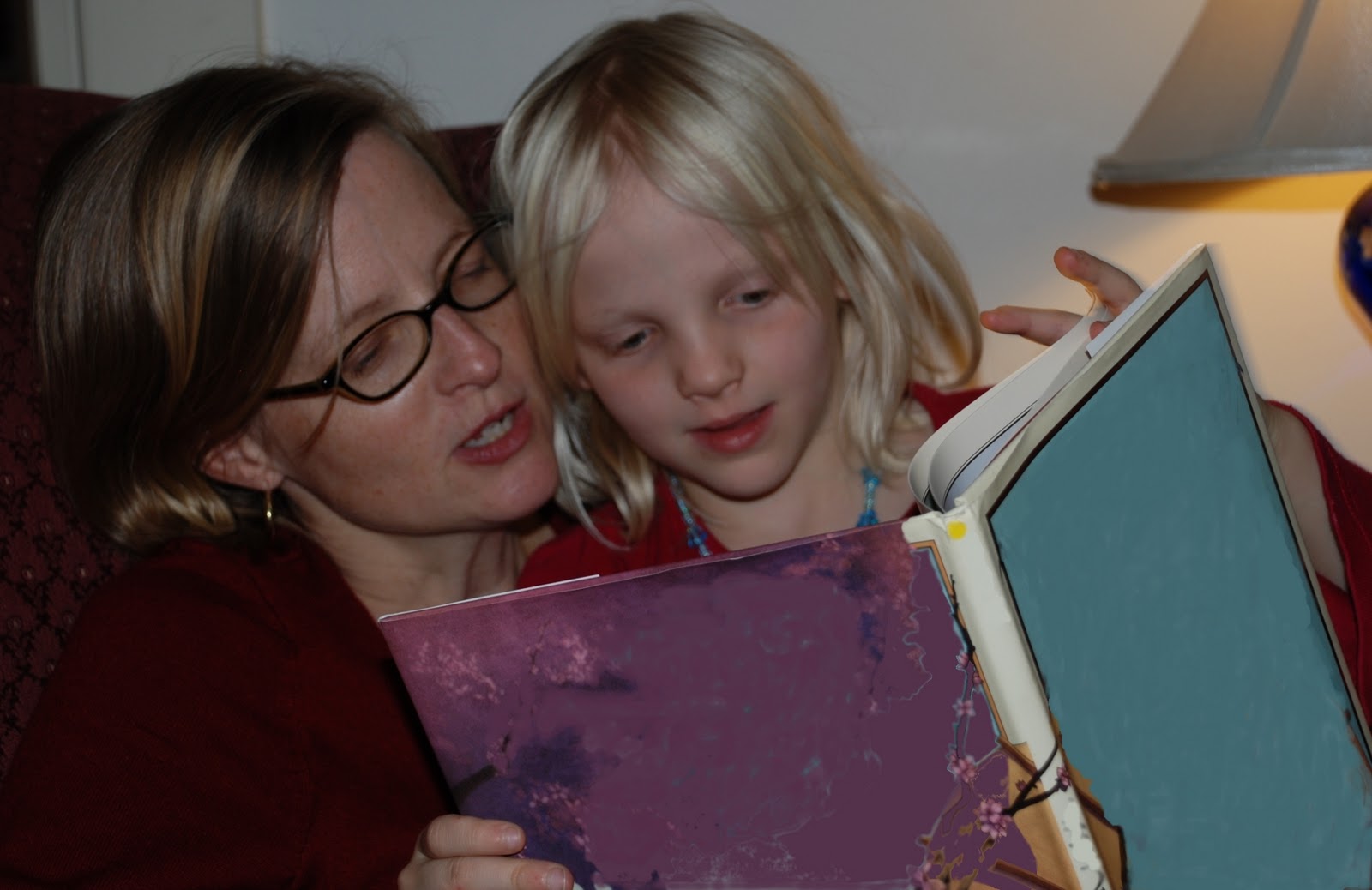Lisa’s post about snuggling raises for me an image of the time-honored tradition of bedtime stories. We have the parent and child (or children) snuggled together with a book; consider how many things are going on in the scene:
1. Bonding and attachment, as Lisa has explained;
2. The beginnings of literacy, a child looking at words while the parent reads;
3. The transmission of culture (values, traditions, story themes, information) through the storybook being read;
4. An opening of the imagination and a call to empathize with another person or other people, i.e. the characters in the story;
5. Development of focus, attention, concentration and listening skills.
6. You might also notice that the child is on her mother’s left side, a preference across cultures (and regardless of right-handedness or left-handedness) and even across species. You can read more about the significance of this for right-brain development in Lisa’s post about how we hold our babes.
6. You might also notice that the child is on her mother’s left side, a preference across cultures (and regardless of right-handedness or left-handedness) and even across species. You can read more about the significance of this for right-brain development in Lisa’s post about how we hold our babes.
There are probably lots of other things going on as well. It seems like stating the obvious that this (hopefully) nightly ritual is much much more than entertainment, ideally an experience that nourishes and encourages both child and parent. What I’d like to propose is that this rich moment can involve other kinds of stories than the ones found in the pages of a picture book. Don’t get me wrong – I make my living writing books for children. I would never suggest not using books at bedtime. What I am suggesting is that we can also expand our definition of what bedtime stories might be.
If you have photographs of family and friends, print them out and put them in an album – not an elaborate scrapbook, just a plain old snapshot book. Pictures of yourself as a child, pictures of grandparents who may be far away, pictures of people you used to know but haven’t seen in years – these are all springboards for life stories.
When you share a part of your life at this relaxed and open interlude between waking and sleeping, you give a piece of yourself to your child to carry into dreams. This is what’s called a liminal moment, a threshold between one state and another. Your child is truly on her way to another world, like a hero stepping into the fairy realm; this piece of yourself is like one of the talismans the hero carries to finish the quest.
One of the things these stories help with is the creation of identity, an understanding of where the child fits in the world. If your child has an answer for the question, “Where do I come from?” then the question of “Where do I return to?” is easier to answer (even though they aren’t always the same answer). Courage to leave home (both literally and figuratively) depends on the strength of this identity. Especially in uncertain times, it seems to me, when people are losing houses or relocating to find work, giving children a secure sense of family identity is essential.
My daughter, herself, has a little snapshot book. In it are a half-dozen pictures of her family in Ethiopia, including the most precious treasure of all, a photo of her birth mother. When we look at these pictures together she can share stories of her own with me, although even she admits it’s getting hard to tell which stories are memories and which ones are dreams. “Long ago and far away” is literally true for her, but whether they are true or dreams, they are part of who she is. The lion of Ethiopia is part of her identity, and will always be part of where she comes from, and part of what will give her courage.
Don’t forget, if you “Like” us on Facebook you’ll be notified when there’s a new blog post

